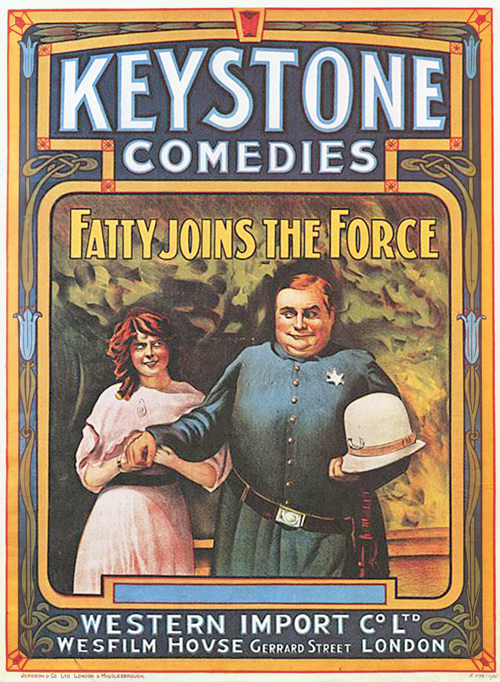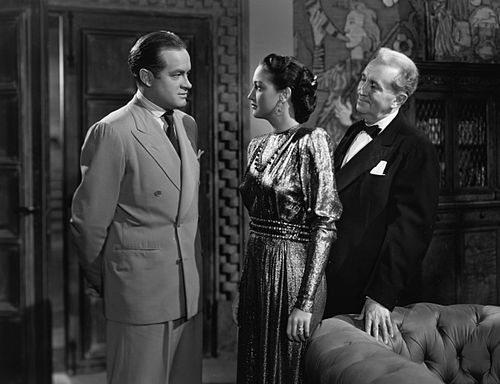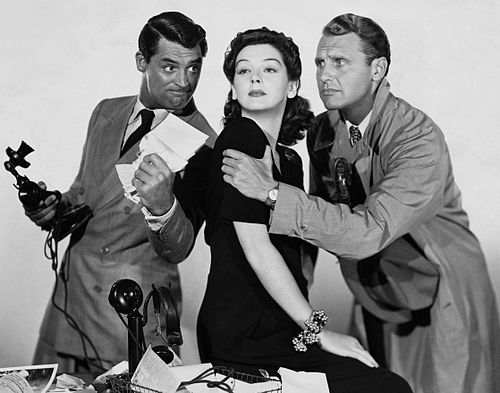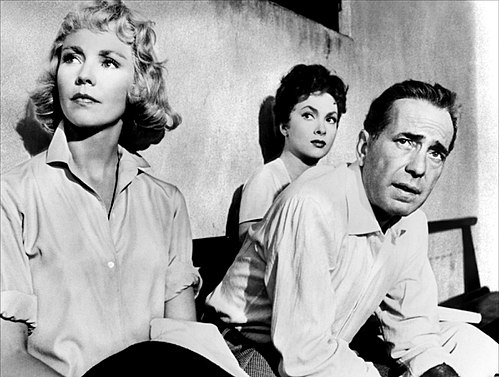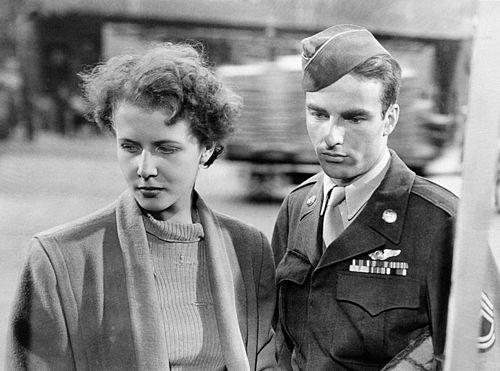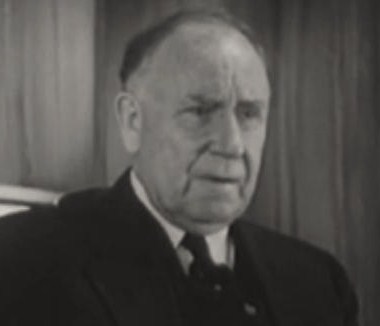Advertisement
Image source: Internet Archive (archive.org)
Download Movie [Video Format: MP4]
Movie Source: Internet Archive (archive.org)
Advertisement
Advertisement
Something to Sing About
1937
A New York bandleader journeys to Hollywood when he is offered a contract with a studio, but he is determined to do things his way and not theirs.
Something to Sing About, (1937 in film), re-released in 1947 as Battling Hoofer,
Plot
"Terry Rooney" (James Cagney) is the stage name of Thaddeus McGillicuddy, a popular New York band leader and hoofer with a radio show, who gets an offer to go to Hollywood to make movies. He leaves behind his fiancee, the band's singer, Rita Wyatt (Evelyn Daw), and finds himself in the hands of studio boss B.O. Regan (Gene Lockhart), who sets a team of studio professionals to mold Rooney into a star. Regan, after struggling with another new talent who quickly developed an uncontrollable ego, also secretly insists that no one praise Rooney's work, on pain of being fired.While shooting a bar fight for his first film, a stunt man who is supposed to throw a fake punch at Rooney hits him deliberately instead. Rooney retaliates, and a full-out fistfight breaks out. Disgusted with Hollywood, Rooney leaves to marry Wyatt, and for a honeymoon takes her on a tramp steamer for a cruise to the South Seas, ending up in San Francisco.
While they are away, the film is completed and premiered, and becomes a huge hit – but, to Regan's dismay, nobody in the studio knows where Rooney is. When he is finally spotted in San Francisco, Regan flies out immediately with a contract, a clause of which requires Rooney to remain single for its seven-year duration. Rooney and Wyatt agree to keep their relationship quiet, with Wyatt posing as Rooney's secretary.
Another film is begun, with Rooney acting alongside Stephanie Hajos (Mona Barrie), and to promote it, studio publicist Hank Meyers (William Frawley) plants news stories saying that Rooney and Hajos are love interests off-screen. The combined stress of having their marriage remain a secret, while Rooney has less and less time for her, eventually drives Wyatt back to New York. Hajos finds out that Rooney is not only not interested in her but is married; the story breaks to the papers, and Rooney returns to Wyatt and their band in New York with a front-page article declaring his relationship with Hojas a hoax.
==Cast==<!--Note:"Evelyn Daw" redirects here-->
- James Cagney as Thadeus McGillicuddy, aka Terrence "Terry" Rooney
- Evelyn Daw as Rita Wyatt
- William Frawley as Hank Meyers
- Mona Barrie as Stephanie "Steffie" Hajos
- Gene Lockhart as Bennett O. "B.O." Regan
- Philip Ahn as Ito, Terry's man-servant
- Marek Windheim as Mr. Farney, dialogue director
- Dwight Frye as Mr. Easton, makeup supervisor
- Johnny Arthur as Mr. Daviani, wardrobe supervisor
- William B. Davidson as Mr. Richards, nightclub owner
- Richard Tucker (actor) as Mr. Blaine, the director
- Kathleen Lockhart as Miss Amy Robbins, newspaper columnist
- James Newill as Jimmy, band member
- Harry Barris as Pinky, pianist in the band
- Cully Richards as Cully, band member
- Evelyn Daw, a 20-year old legit soprano from Geddes, South Dakota, was singing with the Los Angeles Philharmonic when she was "discovered" by director Schertzinger.</> a singing cowboy film.<></> Afterwards, she continued to work in theater and opera.</>
Production
Something to Sing About was in production at Grand National's studios on Santa Monica Boulevard in Hollywood under the working title "When I'm with You". Evelyn Daw was not the studio's first choice for the part of Cagney's love interest: they initially announced that Helen Jepson] would play the part.< name=tcmnotes />Because of the expense of making this film, and its poor box office, Grand National went bankrupt in 1940. Ironically, the next film they had planned for Cagney was }
The film includes five songs and three dances. Cagney's dancing and singing open and close the film, and the opening number also incorporates singing from Rooney and Wyatt's bandmates as well as from Daw.
In one scene on the tramp steamer, Cagney dances with his long-time friends from vaudeville Johnny Boyle and Harland Dixon – two of the major sources of inspiration for his dancing style – which Cagney called one of the great moments of his life and a "privilege".</>
The dancing is in Cagney's inimitable style, which mixes vaudeville, tap dancing, jigs, and semi-ballet. According to an article in the New York Times, Cagney would occasionally go over his steps with Fred Astaire before the dances were filmed.
Response
Although the critical response was generally favorable, the film could not overcome the disadvantages of its small budget and the lack of wide distribution caused by its release by a newly formed independent company bucking a system dominated by the major studios. With no breakout songs in the not very memorable score, there was little chance of the film succeeding.See also
- List of films in the public domain in the United States
- Poverty Row - appellation for small, independent American film studios, many located on Gower Gulch
- Studio system
Notes
}Category:1937 films
Category:1930s musical films
Category:Black-and-white films
Category:English-language films
Category:Films directed by Victor Schertzinger
Category:Grand National Films films
Category:American satirical films
Category:Films about filmmaking
Category:Films set in Los Angeles, California
Zion Myers, Victor Schertzinger


